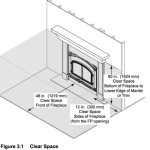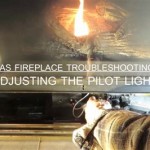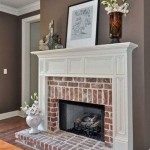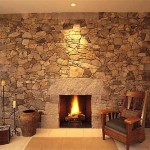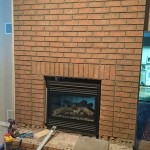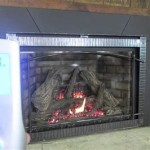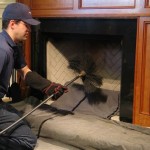Brick Fireplace Stone Wall: A Fusion of Rustic Aesthetics and Enduring Craftsmanship
The incorporation of brick and stone into fireplace designs is a time-honored architectural tradition, offering a unique blend of rustic charm, durability, and aesthetic appeal. A "brick fireplace stone wall" commonly refers to a fireplace design where either brick or stone constitutes the predominant facing material, potentially extending to form a feature wall. These designs range from minimalist, streamlined structures to elaborate, multi-textured compositions, catering to diverse architectural styles and personal preferences. This article examines the nuances of brick and stone fireplace walls, delving into their design considerations, installation processes, material properties, and maintenance requirements.
The decision to utilize brick or stone in a fireplace wall design hinges on a multitude of factors. These encompass the overall stylistic intent of the space, the structural capabilities of the existing framework, budgetary constraints, and the desired level of maintenance. Both materials offer distinct advantages and present unique challenges, warranting careful evaluation before implementation. Understanding these factors is crucial for achieving a harmonious integration of the fireplace wall with the surrounding environment.
Design Considerations for Brick and Stone Fireplace Walls
Designing a brick or stone fireplace wall necessitates a comprehensive approach that encompasses not only the aesthetic aspects but also the functional requirements and safety standards. Key considerations include the scale and proportion of the fireplace relative to the room, the choice of brick or stone type, the mortar style and color, and the integration of the fireplace with other architectural elements.
The size of the fireplace should be commensurate with the dimensions of the room. A fireplace that is too large can overwhelm a smaller space, while a fireplace that is too small may appear insignificant in a larger room. Careful attention should be paid to the hearth size, firebox opening, and overall height of the fireplace to ensure a balanced and visually appealing design. Consider using digital rendering tools to visualize different scales and proportions before committing to a specific design.
The selection of brick or stone type is a critical design decision that will significantly influence the overall aesthetic of the fireplace wall. Brick offers a classic, traditional look and is available in a wide range of colors, textures, and sizes. Common brick types include common clay brick, face brick, and paving brick, each possessing distinct aesthetic and structural properties. Stone, on the other hand, provides a more rustic and natural appearance. Stone choices can range from natural fieldstone and river rock to manufactured stone veneers, each offering varying degrees of texture, color variation, and dimensional consistency. The choice between brick and stone should align with the desired style and the existing architectural context.
Mortar style and color play a crucial role in the overall appearance of a brick or stone fireplace wall. Different mortar joints, such as concave, V-joint, and raked joints, can create distinct visual effects. The color of the mortar can either blend seamlessly with the brick or stone, creating a monolithic appearance, or contrast sharply, highlighting the individual units. Careful consideration should be given to the mortar type and color to achieve the desired aesthetic effect and ensure compatibility with the chosen brick or stone.
The integration of the fireplace with other architectural elements is essential for creating a cohesive and harmonious design. The fireplace wall should complement the existing architectural style of the room, whether it be traditional, contemporary, or rustic. The integration of mantels, shelving, or built-in cabinetry can enhance the functionality and aesthetic appeal of the fireplace wall. Attention should also be paid to the surrounding wall surfaces and the integration of lighting to create a balanced and visually pleasing composition.
Installation Process and Material Properties
The installation of a brick or stone fireplace wall is a complex process that requires careful planning, skilled craftsmanship, and adherence to safety standards. The process typically involves preparing the substrate, laying the brick or stone, applying mortar, and installing the firebox and chimney components. Understanding the material properties of brick and stone is essential for ensuring a successful and durable installation.
Proper substrate preparation is crucial for ensuring the long-term stability and performance of the fireplace wall. The substrate, typically a concrete or masonry wall, must be clean, level, and structurally sound. Any existing paint, wallpaper, or debris should be removed to ensure proper adhesion of the mortar. Reinforcement may be necessary if the wall is not capable of supporting the weight of the brick or stone. A waterproof membrane may also be installed to protect the wall from moisture intrusion.
Laying the brick or stone is a skilled craft that requires precision and attention to detail. The brick or stone units should be laid in a consistent pattern, with uniform mortar joints. A level and plumb line should be used to ensure that the wall is straight and true. The mortar joints should be properly filled and tooled to create a watertight seal. The installation of the firebox and chimney components should be performed by a qualified professional, ensuring compliance with all applicable building codes and safety standards.
Brick, primarily composed of clay, offers a consistent and predictable material, though its inherent porosity necessitates proper sealing in certain applications. Its thermal mass contributes to the slow release of heat, making it an energy-efficient choice. Stone, defined by its natural variations in color, texture, and density, presents a unique set of challenges. Natural stone requires careful selection and preparation to ensure structural integrity and aesthetic consistency. Manufactured stone veneers offer a lighter and more uniform alternative, providing a similar appearance at a lower cost and with easier installation.
The properties of the mortar are equally important as those of the brick or stone. Mortar serves to bind the brick or stone units together, providing structural support and creating a watertight seal. The mortar should be compatible with the chosen brick or stone and should possess adequate compressive strength and bond strength. Different mortar types, such as Type N, Type S, and Type M, are available for different applications. The choice of mortar type should be based on the specific requirements of the project and the recommendations of a qualified professional.
Maintenance and Longevity of Brick and Stone Fireplace Walls
Maintaining a brick or stone fireplace wall involves regular cleaning, inspection, and repair to ensure its long-term durability and aesthetic appeal. Proper maintenance can prevent costly repairs and extend the lifespan of the fireplace wall. Understanding the potential issues and implementing appropriate preventive measures is crucial for preserving the integrity of the structure.
Regular cleaning is essential for removing soot, dust, and other debris from the surface of the brick or stone. A soft brush or vacuum cleaner can be used to remove loose debris. Stains and soot can be removed with a mild detergent solution and a scrub brush. Harsh chemicals should be avoided, as they can damage the brick or stone. A pressure washer can be used for more extensive cleaning, but caution should be exercised to avoid damaging the mortar joints.
Regular inspection of the brick or stone and mortar joints is crucial for identifying potential problems. Cracks, spalling, and loose mortar should be repaired promptly to prevent further damage. Small cracks can be filled with a masonry patching compound. Larger cracks may require the removal and replacement of the damaged brick or stone and mortar. The chimney should also be inspected regularly by a qualified professional to ensure that it is free of obstructions and in good working order.
Water damage is a common cause of deterioration in brick and stone fireplace walls. Water can penetrate the brick or stone and mortar joints, causing them to crack and spall. Proper waterproofing measures, such as applying a sealant to the surface of the brick or stone, can help to prevent water damage. The installation of a chimney cap can also prevent water from entering the chimney and damaging the fireplace.
The longevity of a brick or stone fireplace wall depends on the quality of the materials, the craftsmanship of the installation, and the effectiveness of the maintenance. With proper care and maintenance, a brick or stone fireplace wall can last for many years, providing a beautiful and functional focal point for the home.

Natural Stacked Stone Veneer Fireplace Ideas

Some Stone Fireplace Surround Ideas You Ll Love Southwest Supply

Natural Stacked Stone Veneer Fireplace Ideas

Read This Before Your Stone Fireplace Makeover Understanding Undertones

Diy Stacked Stone Fireplaces On A Budget Msi Blog

Faux Stone Fireplace Surround Over Old Brick Genstone

12 Stacked Stone Fireplace Ideas For Optimal Coziness

50 Sensational Stone Fireplaces To Warm Your Senses Brick Fireplace Makeover Home Living Room With
.jpg?strip=all)
Brick Fireplace Gets Stone Veneer Makeover

Stand Out White Stacked Stone Accent Fireplace
Related Posts

